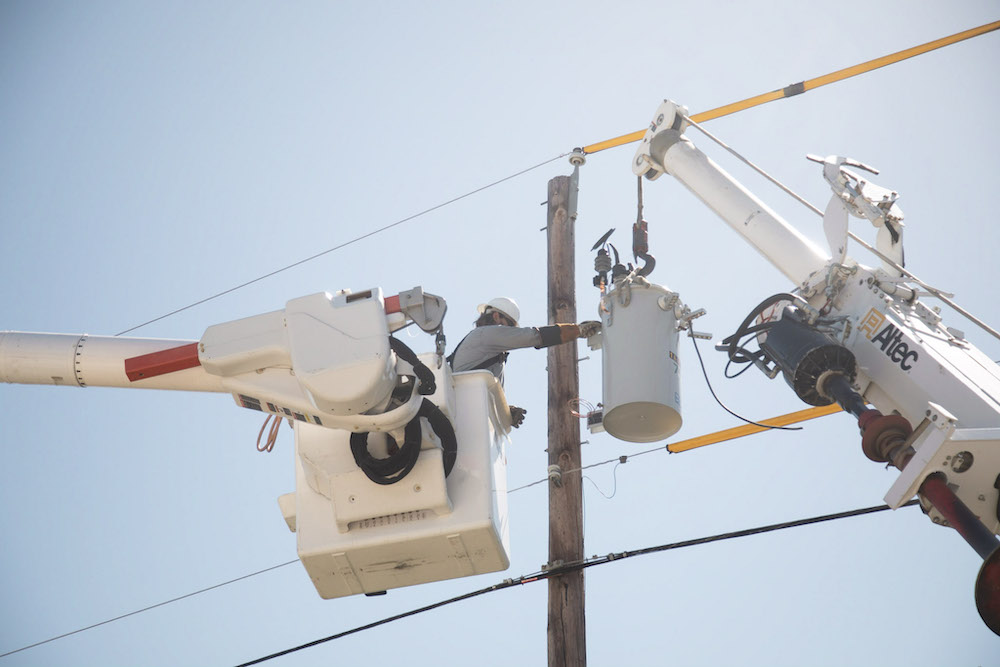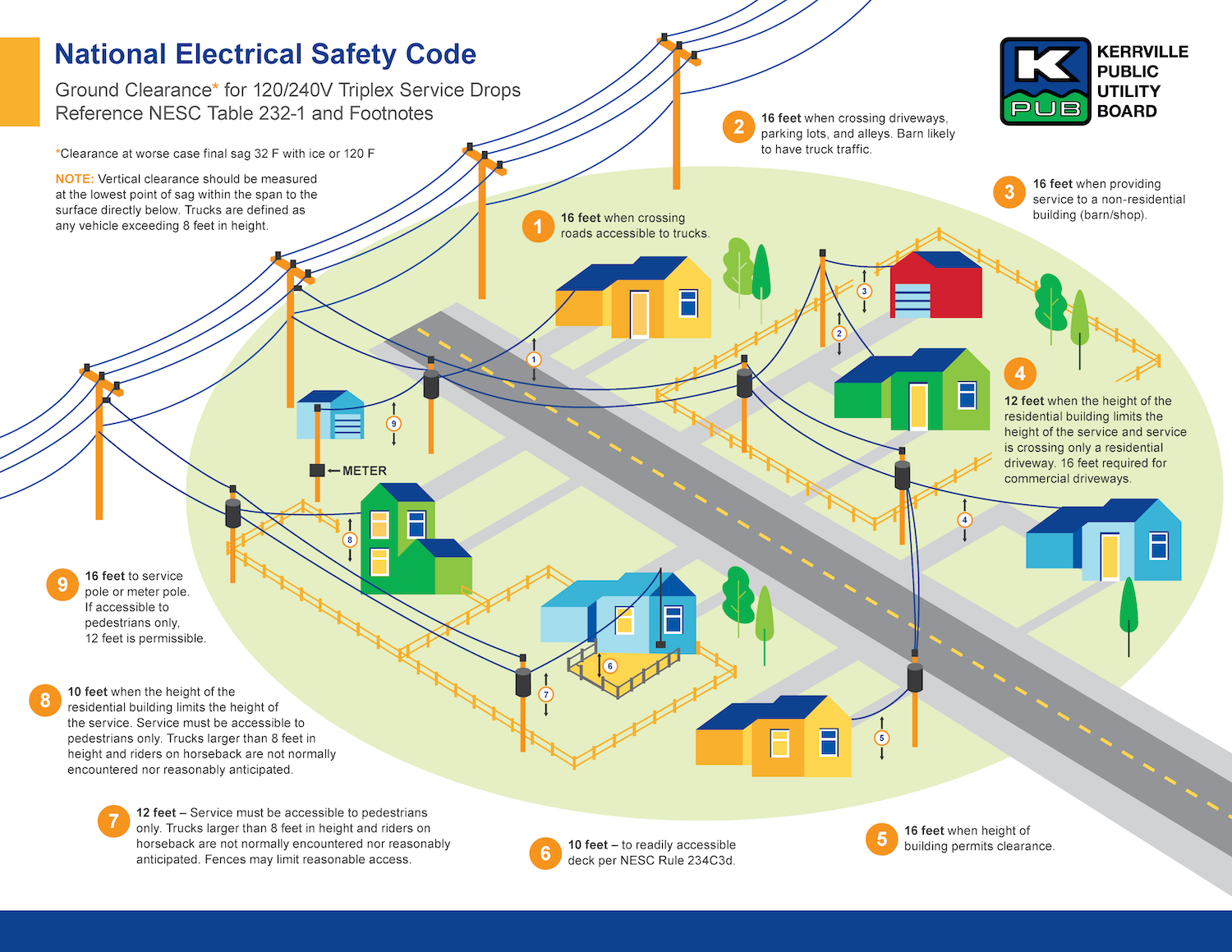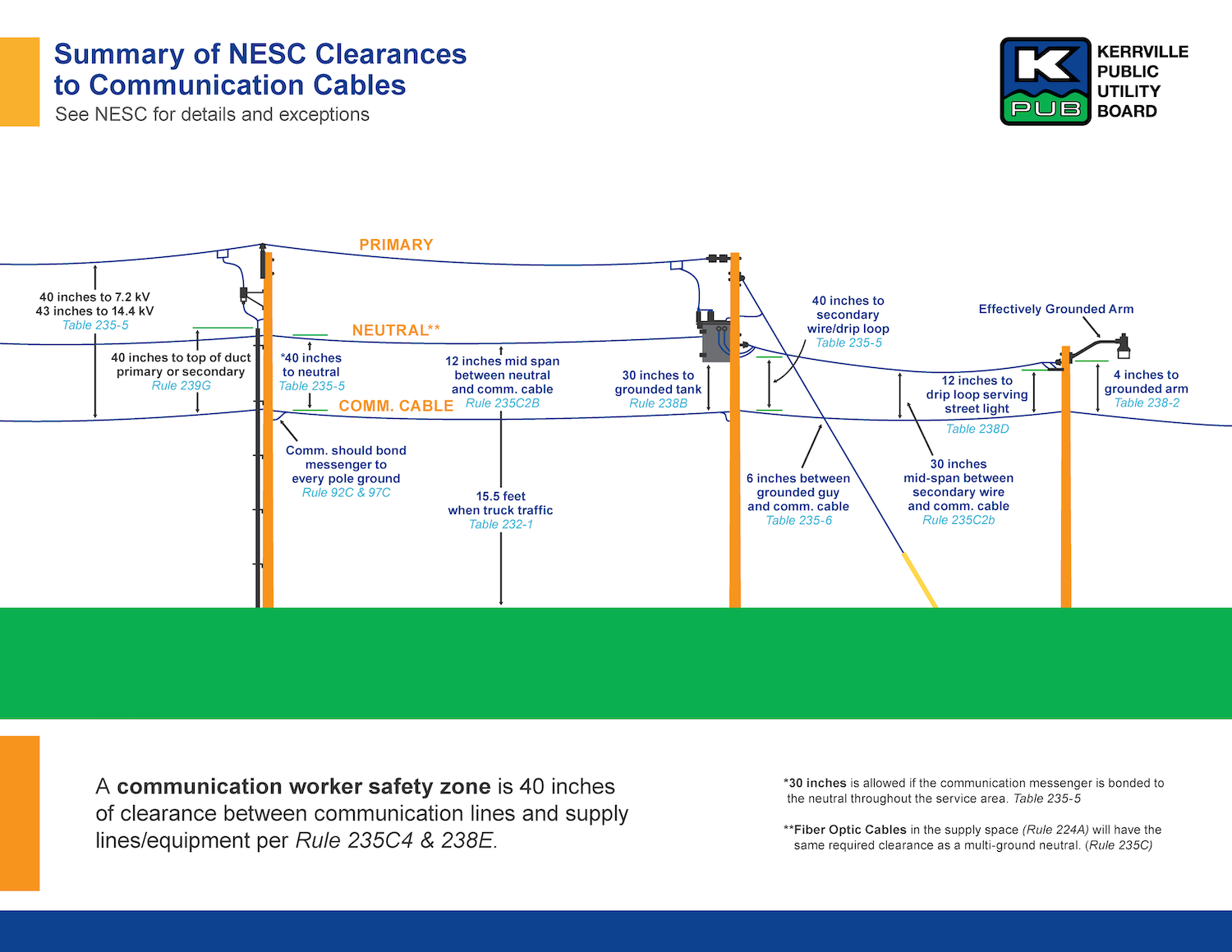New Construction & Development
As a community-owned, public power utility company, KPUB takes great pride in providing our residential and commercial customers with low-cost, reliable and safe electricity.
The information found on this page is designed for those constructing homes or facilities for temporary or permanent service within the KPUB service area.
No matter the size of your residential or commercial project, KPUB is here to provide you with assistance throughout it all in a guiding and supportive manner. If you have any questions throughout this process, please contact our office directly at 830.257.3050 and ask to speak with our engineering department or email us at [email protected].
Additionally, please review our service policy to be familiarized with rules, regulations and the overall process to connect your new service.
STEPS TO START YOUR NEW SERVICE
Step
1
Before you apply, consult with your electrician and/or architect.
Customers should consult with an electrician and/or architect regarding voltage ampacity and square footage requirements for your property.
This is critical for the engineering department to ensure your job is designed properly and that your service will meet your property’s electrical demand needs. Changes made after the design process has begun can result in project delays and additional costs.
Step
2
Determine if you would like an outdoor light.
If an outdoor light is desired, please inform our customer service department so that an engineering technician may be advised. A consultation will be set up upon our engineering department’s review.
Step
3
Determine if you will need a temporary electric service.
Temporary services are provided for construction purposes. If facilities have to be temporarily extended to provide the service drop, the customer is required to pay a temporary service fee for the cost of the extension.
Step
4
Complete an application for electric service and return it to KPUB.
Customers must first complete an application to establish electric service before any necessary facilities are scheduled for construction.
Step
4
Approve your design, and pay any fees that may be required (referred to as a Contribution in Aid to Construction, or CIAC).
Approve your electric design as reviewed with one of our KPUB engineering techs, and pay any fees that may be required (referred to as a Contribution in Aid to Construction, or CIAC). Your CIAC is the amount owed by the customer for KPUB to install the infrastructure to be able to provide you with service.
Step
5
Obtain necessary electric permits from governing authority, if applicable.
The City of Kerrville and the City of Ingram require building permits within the city limits. Prior to connecting a temporary or permanent service, the clearance must be received by KPUB from the authorizing entity.
Step
6
Provide any easement(s) to KPUB for your service project, as required.
The customer requesting service is responsible for the collection of any necessary easements from other property owners to establish electric service. For additional information, please click here to view our service policy.
Step
7
Ensure the property site is accessible and ready for construction to begin.
Customer shall provide, at no cost to KPUB, suitable space on the customer’s premises, accessible at all times, for the installation and operation of facilities necessary to provide electric service.
Additional clearing may be required to facilitate construction activities beyond the limits of the defined right-of-way. Clearing the property’s right-of-way is the customer’s responsibility and must be done before the job design can be finalized and released for construction activities. For additional information, please click here to view our service policy.
Step
8
Ensure your side of the point of service is complete.
Customer should work with their electrician to ensure that their side of the point of service is complete to prevent project delays. This will differ between underground and overhead service design. For additional details, please click here to view our service policy.
Step
9
You’re ready to officially connect new service!
KPUB Service Policy
Builders and contractors must follow certain specifications when requesting electric service. Before beginning a project, please refer to our service policy for details regarding line extensions, line clearance, easements and more.
KPUB Tariff
For full information on KPUB’s service fees, rules and regulations, please refer to our tariff.
Meter Sockets
Customers must provide their own meter socket for self-enclosed metering installations. This material can be supplied by an electrical supply house or home improvement store.
Click the button below to view KPUB’s listing of approved meter socket manufacturers and part numbers.
Standard Service Voltages
Service is provided with alternating current at a nominal frequency of 60 Hz.
| Single Phase | Three Phase |
| 120/240 | 120/208Y |
| 277/480Y | |
| 7200/12470Y |

Standard Ampacities
The largest overhead transformer size provided is a 75 kVA single phase or 225 kVA three phase. Any Kerrville Public Utility Board Electric Service Policy 2 Effective: March 2019 service requiring capacity above these limits will require a pad mount to be installed.
For all load requests over 400A, three phase service is required. Any three-phase request over 750 kVA will require 480 V secondary service or primary voltage service. Please refer to the Meter Sockets section to determine the appropriate meter socket provided by these requirements.
For standard residential service and in order to meet service entrance fault current ratings, the typical transformer size will be a 100 kVA.
Codes
The requirements in our service policy are based upon the applicable provisions of these codes provided below. Customer’s wiring and electrical equipment shall be installed in accordance with the latest editions of these codes. Where municipal, state, or KPUB requirements exceed those stated in these codes, such requirements shall govern.
National Electrical Code (NEC)
The NEC is an American National Standard, published by the National Fire Protection Association, and is used by electrical contractors to install Customer electrical facilities. National Electrical Safety Code (NESC) The NESC is the American National Standard ANSI-C2, published by the Institute for Electrical and Electronics Engineers (IEEE), and is used by KPUB for the design and construction of electric supply facilities.
Clearances
Clearance from KPUB facilities is governed by the NESC, government agencies, and as outlined in this service policy. The governing clearance from these codes will be the most restrictive as allowed by prudent engineering judgment and as determined at KPUB’s discretion.
Interconnection Requirements for a Distributed Generation System
Distributed generation (DG) refers to small-scale power generation (i.e. solar, wind, other) at a customer’s home, or business, used to reduce the customer’s need for power from the utility power grid.
Click here to review the requirements and documentation that must be submitted in order to “interconnect” with the electrical supply provided by KPUB before installing any distributed generation equipment.


